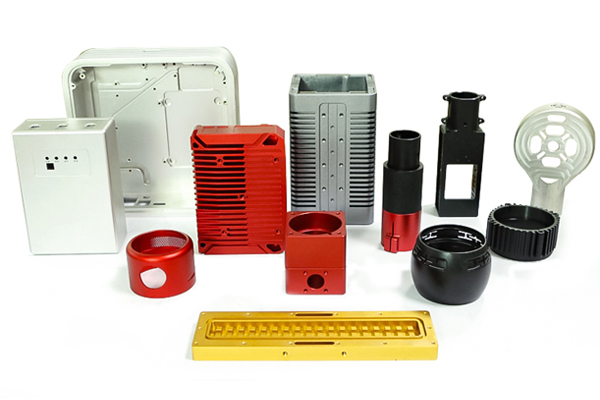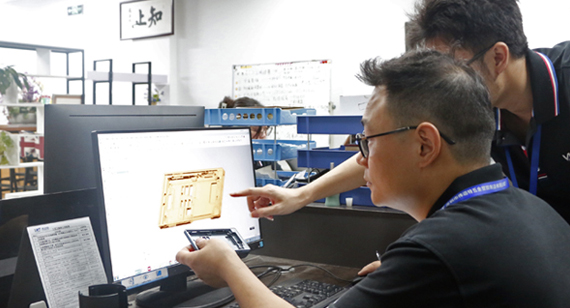15 years one-stop China custom CNC machining parts factory

Hey there I’m VMT Sam!
With 25 years of CNC machining experience we are committed to helping clients overcome 10000 complex part-processing challenges all to contribute to a better life through intelligent manufacturing. Contact us now
 131 |
Published by VMT at Jan 15 2024
131 |
Published by VMT at Jan 15 2024
Introduction:
In today's globalized manufacturing environment, the demand for custom CNC machining parts is steadily rising, with pricing disparities becoming a shared concern for both customers and manufacturers. Various factors, such as market conditions, technological levels, cost structures, and supply-demand dynamics, contribute to the differences in prices for custom CNC machining parts across different regions. This article explores the reasons behind regional price disparities and discusses strategies to ensure reasonable pricing levels.

I. Reasons for Regional Price Disparities:
Differences in Cost Structures:
Variances in CNC machining cost structures, including equipment procurement, raw material costs, labor costs, and energy costs, contribute to regional price differences. Developed countries with advanced technology often have higher processing costs due to elevated labor expenses, while developing regions may leverage lower labor costs, presenting a cost advantage.
Market Supply-Demand Dynamics:
Disparities in market demand and supply for custom CNC machining exist across regions. In regions with high demand, competitive pressures may lead to lower prices, while areas with sufficient supply may adopt higher pricing strategies.
Technological Levels and Quality Requirements:
Regional disparities in CNC machining technology levels and quality requirements contribute to price differences. Manufacturers with high technological proficiency and strict quality standards often command higher prices, reflecting the added value of their products.
Trade Policies and Tariffs:
Variances in trade policies and tariff systems among different countries and regions can influence the prices of custom CNC machining parts. Tariffs and trade barriers may lead to price increases or supply chain instability.

II. Measures for Rationalizing and Ensuring Prices:
Market Research and Analysis:
Manufacturers should conduct thorough market research and analysis to understand regional pricing levels, cost structures, and competitive landscapes. This aids in formulating rational pricing strategies and maintaining a competitive edge.
Cost Accounting and Control:
Precise cost accounting, covering equipment depreciation, raw material costs, labor costs, and energy costs, is crucial. Effective cost control measures help reduce production costs and enhance profitability.
Technological Innovation and Quality Enhancement:
Manufacturers should stay vigilant to new technological developments, continually innovating and improving product quality. By being technologically advanced and ensuring high product quality, manufacturers can increase product value and competitiveness, justifying higher pricing.
Cross-Regional Collaboration and Coordination:
Consideration of collaborative partnerships with partners in different regions can facilitate resource sharing and complement strengths. Through cross-regional collaboration and coordination, production costs can be lowered, production efficiency increased, and diverse market demands met.
Flexible Pricing Strategies:
Manufacturers should devise flexible pricing strategies based on market fluctuations and customer demands. During periods of high demand, prices can be adjusted upwards, while in highly competitive or low-demand periods, promotional strategies or price discounts may be considered to attract customers.
Customer Relationship Management:
Emphasis on customer relationship management is crucial. Building strong customer relationships and trust mechanisms through high-quality services and products that meet custom requirements enhances customer satisfaction and loyalty. Long-term cooperative relationships contribute to market stability and pricing power.
Transparency and Integrity:
Manufacturers should maintain transparency and integrity in pricing strategies, avoiding unfair competition and fraudulent practices. By establishing good business ethics and reputation, companies can enhance their image and market trust, ultimately gaining better pricing positions.

III. Conclusion:
In conclusion, the pricing of custom CNC machining parts is influenced by various factors, resulting in regional disparities. Manufacturers should deeply understand market conditions and customer needs, devising rational pricing strategies. Simultaneously, measures such as technological innovation, cost control, cross-regional collaboration, and transparent customer relations should be implemented to enhance competitiveness and stabilize pricing capabilities. Establishing a trustworthy relationship with customers, providing high-quality services and products, facilitates long-term cooperation and mutual success.
Ready To Start Your Next Project?
Get Instant Quote

Request a Free Quote
Send us a message if you have any questions or request a quote. We will get back to you ASAP!